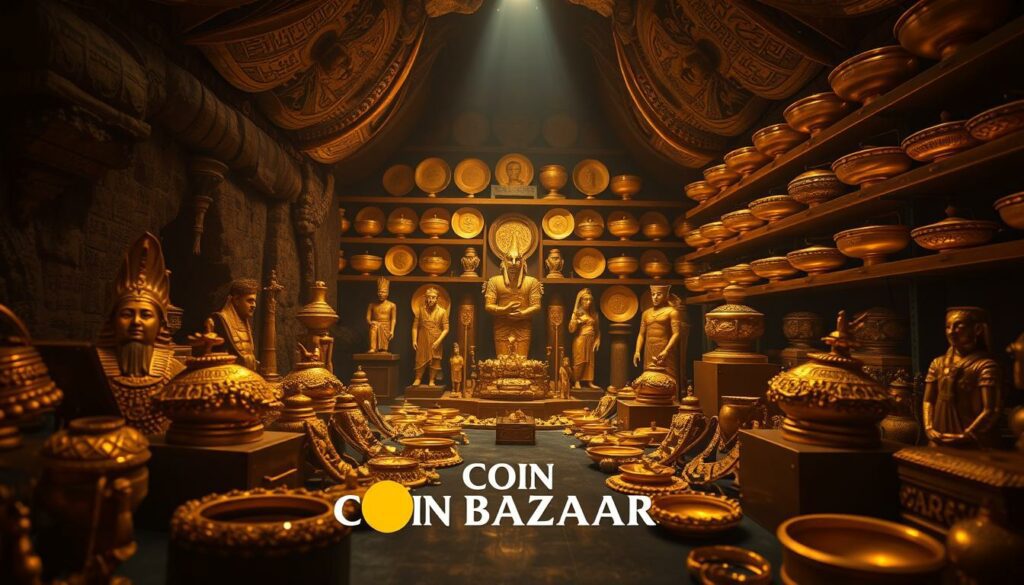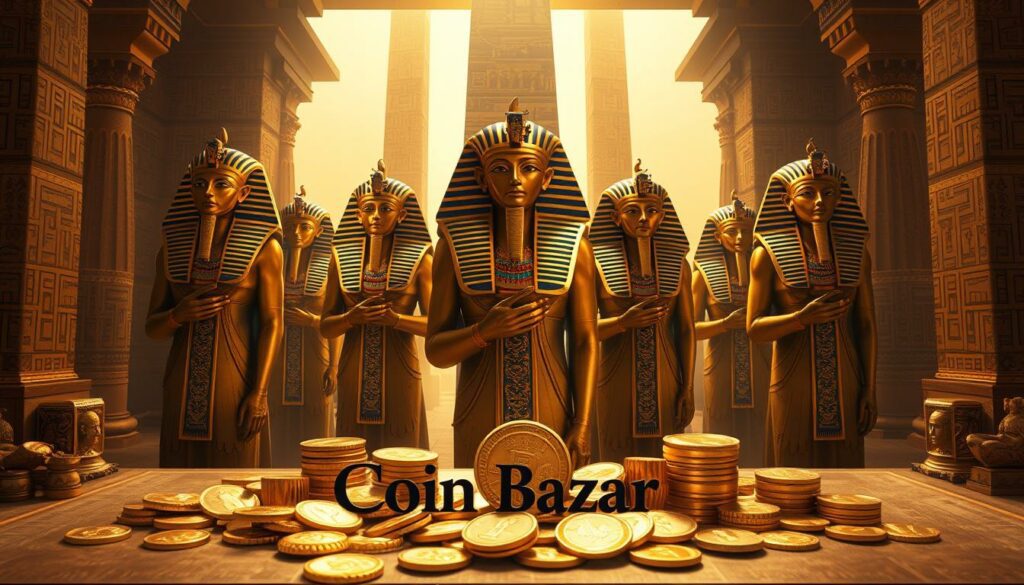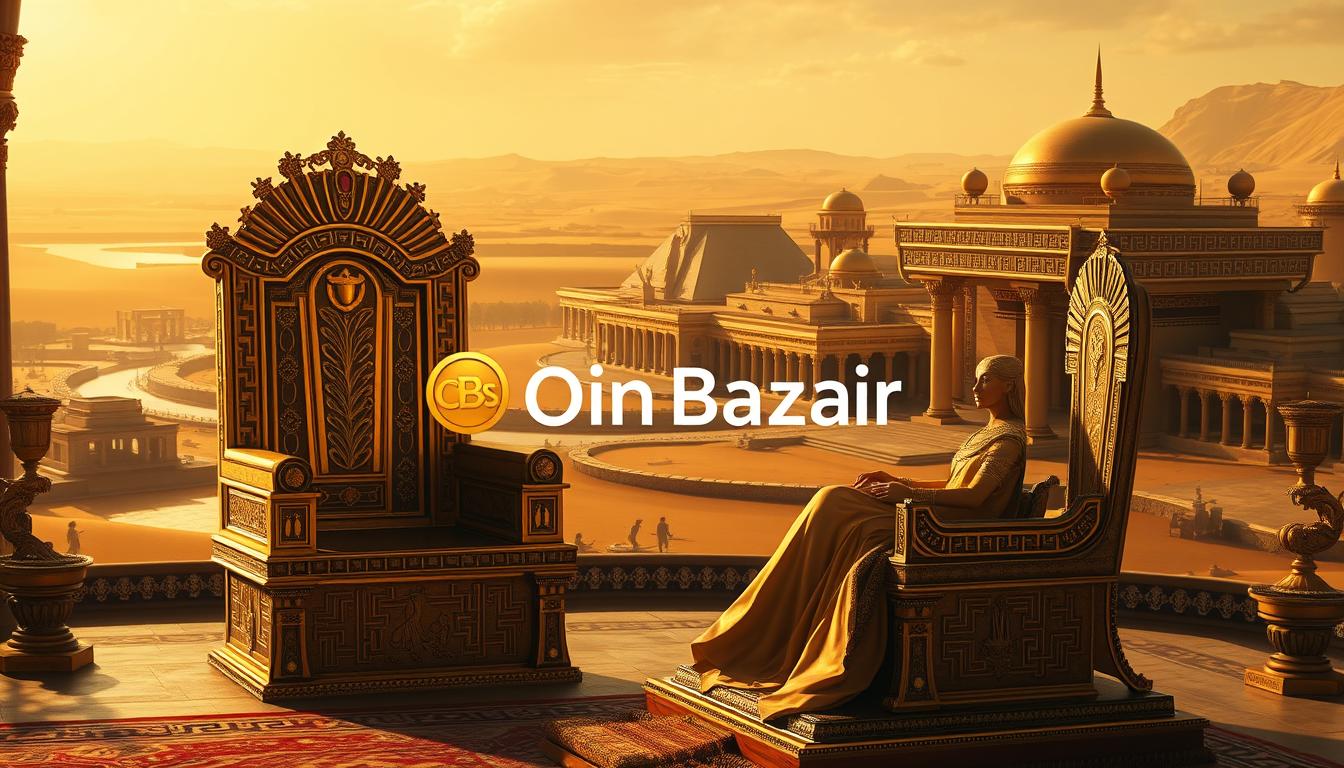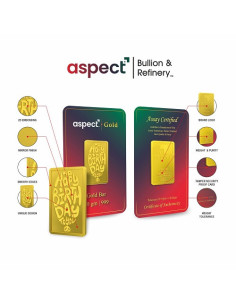Exclusive Deals & Trending Items
The link between precious metals and royal families is long-standing. Ancient Egypt is a key example. Gold in royal regalia and jewelry showed wealth and power.
Exploring the link between gold and royalty shows how these items marked status. From Pharaohs to today’s queens, gold’s value endures.
Key Takeaways
- The historical use of gold in royal regalia symbolized wealth and power.
- Royal families have long been associated with precious metals.
- Luxury investments like gold have been used to signify royalty and wealth.
- The connection between gold and royalty spans across ancient civilizations.
- The value of precious metals remains a testament to their enduring allure.
The Ancient Allure: Gold in Early Civilizations
Gold has fascinated humans for thousands of years. Its bright shine has been a part of early societies. You might ask, how did gold become so important in history? It all started with its discovery and how it first affected ancient people.
The Discovery of Gold and Its Initial Impact
Gold was first found in prehistoric times. The first gold items showed up in graves and homes. Gold was highly valued for being rare and lasting long, making it perfect for decorations and symbols. Its discovery had a big impact, changing trade and culture between early groups.


Early Uses and Significance in Prehistoric Societies
In ancient times, gold was more than just jewelry. It was a sign of wealth and power. Gold in burials showed status and spiritual beliefs, showing its importance. It was clear gold was valuable, starting its role in human history, from royal assets to keeping wealth.
Learning about gold’s early uses helps us understand its lasting charm. As societies grew, so did gold’s role. This laid the foundation for its ongoing importance today.
Egyptian Pharaohs: The First Royal Gold Enthusiasts
Egyptian pharaohs were true pioneers in gold use. They deeply embedded it in their culture and religious practices. Their love for gold paved the way for future royal families.


Gold in Ancient Egyptian Religion and Mythology
In ancient Egyptian mythology, gold was linked to the sun god Ra. It symbolized divine power and eternity. Gold’s role in religious rituals and artifacts showed its value in their belief system. It was seen as a luxury investment for the afterlife.
The Golden Treasures of Tutankhamun
The discovery of Tutankhamun’s tomb unveiled a wealth of golden treasures. The famous golden mask was among them. These treasures showed the pharaoh’s wealth and gold’s role in royal burial practices. They protected the pharaoh’s assets in the afterlife.
Gold Mining and Production in Ancient Egypt
Egypt’s gold mining started around 2000 BCE, mainly in Nubia. The gold was used for intricate jewelry and ornaments. This influenced the gold price forecast in the ancient world by controlling its supply.
Learning about Egyptian pharaohs’ gold usage offers insights into its role as a luxury investment. It shows its impact on royal assets. As we delve into the world of gold and royalty, its timeless allure becomes clear.
Mesopotamian Monarchs and Their Golden Treasures
Mesopotamian rulers used gold to show their wealth, power, and divine right to rule. Gold was a key part of ancient civilizations, used in royal items and artifacts. This highlighted the ruler’s wealth and divine authority.
Sumerian and Babylonian Royal Gold Artifacts
The Sumerians and Babylonians were early users of gold in their royal items. Golden headdresses, jewelry, and ceremonial objects were common. For example, the Golden Lyre of Ur shows the advanced craftsmanship and gold’s value in Sumerian times.
Some notable examples of Mesopotamian gold artifacts include:
- Intricately designed golden jewelry
- Ceremonial daggers and swords
- Golden statues and figurines
Gold as a Symbol of Divine Right to Rule
In Mesopotamia, gold symbolized wealth and was linked to the gods. Rulers used gold to show their divine right to rule. They claimed divine descent or approval. This made their rule more accepted by their subjects.
The importance of gold in Mesopotamian royal culture shows its lasting value. It offers insights into royalty investment opportunities and wealth preservation strategies that have lasted through time.
Gold and Royalty: The Timeless Connection
Gold has always been linked with royalty, showing wealth and power. Monarchs used gold to show their riches and right to rule. This metal is key in royal events, items, and investments, showing the value of luxury investments and royal assets.
Symbolic Meaning of Gold in Royal Contexts
In royal settings, gold shows the monarch’s status and prestige. Gold is used in coronations to show sovereignty and divine authority. Royal crowns and scepters, made of gold, represent royal power.
Gold’s meaning is also seen in royal jewelry and ornaments. These items, covered in gems, increase their value and meaning.
Gold as a Marker of Divine Selection and Authority
Gold has always shown divine selection and authority. Monarchs, seen as divinely chosen, use gold in religious and ceremonial ways. Gold is believed to have sacred qualities, linking the monarch to the divine.
Monarchs show their wealth and divine right by using gold. This practice is seen across cultures, where gold is a key part of royal assets. It shows the bond between the monarch and the divine.
Golden Ages of Greece and Rome
Gold was key in ancient Greece and Rome. It showed wealth and power. It also left a mark that still shapes our views of these old cultures.
Greek Rulers and Their Golden Legacies
Greek leaders, like Alexander the Great, loved gold. They used it in coins, jewelry, and more. Alexander’s empire spread gold’s value far and wide. Today, we see gold’s legacy in ancient treasures, showing Greek skill and gold’s deep meaning.
Some key points about Greek rulers and gold are:
- They made gold coins that set a currency standard
- They crafted stunning gold jewelry for themselves and the gods
- Gold was used in ceremonies to show wealth and divine support
Roman Emperors and the Imperial Gold Standard
The Romans built on the Greeks’ gold traditions. They created a gold standard that helped their economy and showed their power. The Roman gold aureus coin became a symbol of their economic strength.
Roman gold use included:
- Gold coins helped trade across the empire
- Gold in imperial regalia showed the emperor’s divine status
- Gold in public projects showed Rome’s wealth and skill
In summary, gold was crucial in Greece and Rome’s golden ages. It played a big role in their economies, cultures, and power symbols. Knowing how gold was used back then helps us understand precious metals and wealth preservation today.
The Golden Heritage of Indian Royalty
Indian royalty’s love for gold is a tradition that still captivates us. The Mughal emperors, in particular, adorned themselves and their buildings with gold. This legacy is still celebrated today.
Ancient Indian Kingdoms and Gold
Ancient Indian kingdoms were known for their wealth and grandeur. Gold was at the heart of their culture. It showed their wealth and divine power.
Gold was used in many ways, from jewelry to temple decorations. It was key in both religious and royal life.
Mughal Emperors and Their Golden Legacy
The Mughal emperors loved gold, using it in their buildings, jewelry, and coins. Their love for gold has shaped our view of gold as a luxury investment today.
The Peacock Throne and Other Legendary Treasures
The Peacock Throne is a famous gold throne covered in gems. It shows the Mughal Empire’s wealth and grandeur.
Mughal Gold Coinage and Economic Influence
Mughal gold coins helped trade and influenced the economy. They built a strong economic system. Knowing about gold coinage helps us understand today’s gold price forecast.
Princely States and Their Gold Collections
The princely states of India also had impressive gold collections. They used gold in their regalia and ceremonies. These collections showed their wealth and status.
Now, these collections are in museums. They give us a peek into Indian royalty’s rich culture.
Indian royalty’s love for gold has left a lasting impact. It shaped their culture and economy. Gold was more than a metal; it was their power and identity.
Asian Dynasties and Their Gold Traditions
Gold has long been a symbol of power and wealth in Asian royal cultures. It was used in regalia and artifacts to show wealth and authority. This was common among Asian dynasties.
Chinese Imperial Gold: From Han to Qing
The Chinese imperial court was famous for its gold use throughout history. Gold was key in Chinese royal culture from the Han to the Qing dynasty. Chinese emperors made intricate artifacts and jewelry with gold, showing their wealth and power. Gold in Chinese culture was not just for looks but also showed their divine right to rule.
Golden masks and ornaments in ancient tombs are a great example of Chinese imperial gold. These show the advanced craftsmanship and gold’s value in royal traditions.
Japanese Imperial Gold Artifacts
In Japan, gold was important in imperial regalia and artifacts. Japanese emperors and samurai warriors adorned their armor and swords with gold, showing their status and prestige. Japan’s gold culture was influenced by China but had its own unique traits.
| Dynasty | Notable Gold Artifacts | Significance |
|---|---|---|
| Han Dynasty (China) | Golden masks, imperial seals | Symbolized imperial power and divine right |
| Qing Dynasty (China) | Intricate gold jewelry, ceremonial objects | Represented wealth and authority |
| Japanese Imperial Court | Gold-adorned armor, swords | Signified status and prestige among samurai |
The gold traditions of Asian dynasties still amaze us today. These cultures saw gold’s value not just as a metal but as a symbol of power and legacy.
Medieval European Monarchs and Gold
Gold was key in medieval Europe, showing wealth and power. Monarchs used it to show their strength and leave a mark.
Charlemagne and the Carolingian Golden Age
Charlemagne, a major figure, used gold in his clothes. The Carolingian Renaissance brought back gold in coins, jewelry, and art. It showed a cultural rebirth in Europe.
Byzantine Emperors and Their Golden Splendor
The Byzantine Empire was known for its gold. Emperors wore gold to show they were chosen by God. This left a big mark in history.
Gold in Medieval Royal Regalia
Gold was everywhere in royal clothes, crowns, and symbols. It showed the monarch’s wealth and power. It also showed their spiritual and political might.
| Monarch | Use of Gold | Legacy |
|---|---|---|
| Charlemagne | Extensive use in regalia and coins | Carolingian Renaissance |
| Byzantine Emperors | Opulent use in imperial regalia and artifacts | Lasting legacy in history |
The Age of Exploration: Gold Rush for Royal Treasuries
The Age of Exploration brought a huge gold rush to Europe. This gold rush greatly increased the wealth of European royal families. Explorers found a lot of gold in the New World, boosting the power and wealth of monarchs.
This gold rush had a big impact on Europe. Many royal families got richer from the gold. The gold also changed gold market trends for a long time.
Spanish Monarchs and New World Gold
Spanish monarchs were big winners from the New World gold. The gold from the Americas helped Spain become a leading world power. This wealth allowed Spanish royalty to invest in new royalty investment opportunities.
The gold also helped fund wars and support the arts. This made the monarchs even more powerful and influential.
How American Gold Transformed European Royal Power
The gold from the Americas changed how European royal power worked. It helped monarchs build wealth, giving them more control over their economies and politics. This wealth was key for wealth preservation strategies, lasting through generations.
Also, the wealth helped develop better financial systems. This made it easier for monarchs to manage their riches.
Gold Standards and Royal Finances
Gold has been key in royal finances, shaping gold standards and economic policies. Monarchs used gold to show wealth and power. It also helped control and stabilize economies. The story of gold standards and royal finances is a captivating one.
The Evolution of Royal Mints and Coinage
The start of royal mints was a big step in gold standards history. Monarchs made gold coins, which became a common way to trade and a sign of power. These coins helped standardize money across areas.
Gold coins were not just for buying things. They were also a safe place to keep wealth. This made gold even more important to royal finances.
Minting coins let monarchs control the money supply. They could change the gold in coins to affect the economy. This made gold a key part of money policies.
How Monarchs Used Gold to Control Economies
Monarchs used gold to control their economies. By setting gold standards, they could change currency values and keep exchange rates stable. This helped them fight inflation, control trade, and keep their economic power.
Knowing the gold price forecast was vital for making smart money decisions. It helped them invest wisely in precious metals.
Gold was used in more ways than just coins. Gold reserves backed currencies, adding security and stability. Managing these reserves was a big part of royal financial plans. It helped them deal with economic problems and keep their wealth.
| Period | Gold Standard | Economic Impact |
|---|---|---|
| Ancient Era | Gold Coins | Standardized Currency |
| Medieval Period | Gold Reserves | Backed Currencies |
| Modern Era | Gold Price Forecast | Influenced Monetary Policies |
Royal Jewels: The Ultimate Golden Status Symbols
Royal jewels and gold collections are key to royal families’ identity. They symbolize their legacy and power. These treasures show the wealth and history of monarchies.
The British Crown Jewels
The British Crown Jewels are famous worldwide. They show the history and glory of the British monarchy. With crowns, scepters, and orbs, they highlight royal craftsmanship and luxury.
Russian Imperial Treasures
Russian Imperial Treasures showcase royal opulence. The Russian crown jewels are exquisite pieces of gold and gems. They reflect Russia’s rich history and monarchs’ grandeur.
Famous Indian Royal Gold Collections
India’s royal history is filled with stunning gold collections. Treasures from various Indian states are famous for their beauty and skill.
The Nizam of Hyderabad’s Gold Treasury
The Nizam of Hyderabad’s collection stands out. It includes gold ornaments and jewels that are top examples of Indian craftsmanship.
Jaipur’s Royal Gold Artifacts
Jaipur’s royal gold artifacts are also noteworthy. They show the region’s rich cultural heritage. These golden treasures highlight local craftsmen’s skill and artistry.
These royal jewels and gold collections are more than luxury investments. They are historical treasures that still inspire today. They show the lasting bond between gold and royalty, even in modern times.
Gold as Royal Investment Strategy Through History
Royal families have always valued gold to keep their wealth for generations. This precious metal has been key in their investment plans. It has been a safe place for their money during tough times.
“Gold is a treasure, and he who possesses it does all he wishes to in this world,” said Columbus. Gold has meant wealth and power for royal families. It has also helped keep their money safe for the future.
How Royal Families Preserved Wealth Through Gold
For centuries, royal families have put a lot of money into gold. They kept gold coins, bars, and jewelry. This made it easy to sell when they needed cash.
Gold helped them keep their wealth and power through hard times. For example, during the Great Depression, gold helped many royal families stay afloat.
Royal Gold Reserves in Modern Times
Today, some royal families still hold onto gold. They see it as a smart way to mix up their investments. It helps protect against inflation and changes in currency value.
The British Royal Family, for instance, still has a lot of gold. This shows gold’s lasting role in their money plans.
“The value of gold is not just in its monetary worth but also in its ability to act as a safe haven during economic downturns.”
This shows gold’s lasting appeal as a royal investment choice.
Modern Monarchies and Their Golden Traditions
In today’s monarchies, gold is more than just a precious metal. It’s a symbol of wealth, power, and heritage. You can see this in the use of gold in royal ceremonies and regalia. Modern monarchies worldwide, like the British and those in the Middle East and Asia, keep these traditions alive. They do this to connect with their history and show off their wealth and status.
Contemporary Royal Ceremonies Featuring Gold
Gold is key in many royal ceremonies today. This includes coronations, state visits, and other big events. For example, the British coronation ceremony is famous for its gold regalia, like the coronation crown and the sovereign’s scepter. These items symbolize the monarch’s wealth and their divine right to rule.
Such ceremonies are carefully planned to show gold’s importance in royal traditions.
Royal Gold Collections in the 21st Century
In the 21st century, royal families keep and grow their gold collections. These collections include historical artifacts, jewelry, and more. They are shown during special events or kept in royal treasuries.
The Royal Collection of the British monarchy is a big example. It has many gold artifacts that are shown to the public. Exploring these collections helps us see gold’s role in modern royal heritage.
Gold Market Trends and Royal Influence
The link between gold market changes and royal investment plans is quite strong. For ages, gold has been key to royal wealth. Monarchies worldwide have poured a lot of gold into their treasuries.
Royal investments have shaped gold market trends. When royals buy gold, demand goes up, which can raise prices. This effect is even stronger when many royals or big investors buy gold together.
Impact of Royal Purchases on Gold Markets
Royal investments can really sway gold markets. For example, when a royal family buys gold, demand increases. This can push the price up, especially if many royals or big investors buy at the same time.
- Increased Demand: Royal purchases can lead to higher demand for gold.
- Market Trends: Significant royal investments can influence overall market trends.
- Price Impact: Large royal purchases can potentially drive up the price of gold.
Royal Gold Investment Strategies for Modern Wealth Preservation
Today, royal families still invest in gold to keep their wealth safe. Gold is a solid investment, especially when the economy is shaky. By adding gold to their portfolios, royals aim to safeguard their wealth for the future.
Some key strategies include:
- Diversification: Investing in gold as part of a diversified portfolio.
- Long-term Holding: Holding onto gold investments for the long term to ride out market fluctuations.
- Regular Investment: Regularly investing in gold to average out purchase prices over time.
Learning how royal families invest in gold can help you make better choices for your own investments.
Lessons from Royal Gold for Today’s Investors
Gold has always fascinated royalty for centuries. This fascination can teach us about investing. Royal gold strategies show gold as a safe investment.
Wealth Preservation Strategies Inspired by Royalty
Royalty has used gold to keep wealth safe for ages. You can do the same by adding gold to your portfolio. Gold’s value has stayed strong over time, making it a solid choice for keeping wealth safe.
Investing in physical gold, like coins or bars, is a good start. You can also look into gold-backed financial products. These steps help protect your wealth from inflation and market ups and downs.
Gold Investment Opportunities in India’s Royal Heritage Cities
India’s royal cities offer special gold investment chances. Places like Jaipur and Udaipur are famous for their gold craftsmanship. Investing in gold jewelry or artifacts from these areas can boost your portfolio.
| City | Gold Investment Opportunities | Potential Returns |
|---|---|---|
| Jaipur | Gold jewelry, artifacts | 5-7% annually |
| Udaipur | Gold coins, bars | 4-6% annually |
| Mysore | Gold-backed financial products | 3-5% annually |
Learning about gold’s role in royal history and exploring India’s royal cities can guide your gold investments. This knowledge helps make smart choices for your gold portfolio.
Conclusion: The Enduring Bond Between Gold and Royalty
Gold has always fascinated royalty, seen as a sign of wealth, power, and divine connection. It has been key in royal cultures, from ancient Egypt to today’s monarchies. Gold’s value goes beyond money, linking to the divine and showing status.
Gold is a key part of keeping royal wealth safe. Its link to royalty teaches us about investing today, especially in India’s royal cities. Gold is a lasting asset, passed down through generations.
The connection between gold and royalty is still strong. It shows the importance of precious metals in royal life today. Thinking about your investments? Remember, gold’s history with royalty shows its lasting value.




















